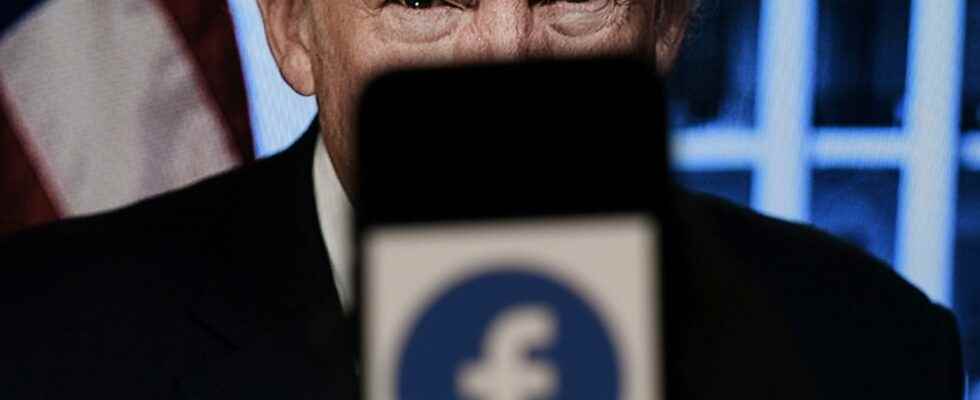Belated realization or desire to save the furniture? Donald Trump’s last message on his facebook page to 32 million subscribers is the following: “I ask everyone in the United States Capitol to remain peaceful. No violence!”. We are then on January 6, 2021 and his supporters are sweeping over the temple of American democracy, furious at the defeat of their leader against Joe Biden. After remaining silent for part of the day about this attack, Donald Trump therefore decides to call for calm. Too late. Facebook has already made the choice to suspend it for two weeks. A sanction extended at the time of the investiture of his rival. A few months later, the Supervisory Board of the American giant (the Oversight Board) agrees on the final length of the sentence. “We are suspending his accounts for two years, starting from the date of the initial suspension on January 7 of this year.” With great precision. “At the end of this period, we will turn to experts to assess whether the risk to public safety has diminished.”
Which brings us to this month of January 2023. Trump will be allowed to repost on the platform. “To assess whether the serious risk to public safety that existed in January 2021 has sufficiently diminished, we assessed the current environment in accordance with our crisis policy protocol, which included reviewing the conduct of midterm elections. in the United States of 2022, and expert assessments of the current security environment. We determine that the risk has sufficiently diminished and that we should therefore adhere to the two-year timetable that we have set. Of which act.
The calm before the storm
The method contrasts with that of Twitter which resulted in a similar decision a few weeks ago. First through the decision-making process. On November 19, following a simple informal “poll” in which 15 million Twitter accounts participated, Elon Musk approved the reopening of the former president’s account in the context of a return to the “fundamentals” of Twitter: freedom of speech, including the most violent. A simplistic way to get rid of any issues of conscience (and bring back angry former users).
The method also differs in the bases of the decision. Twitter would actually like to wipe the slate clean. “Under pressure from hundreds of activist employees, Twitter is banning Trump, a sitting US president, even though they themselves admit he didn’t break the rules,” Elon Musk criticized in December, taking as proof the “Twitter Files”, these internal documents whose distribution the billionaire had cleverly orchestrated.
Meta does not go back on the merits of his initial approach. “When there is a risk of harm in the real world – a high risk that warrants Meta’s intervention in the public debate – we act,” warned Nick Clegg, Meta’s head of international affairs. Possible account suspensions, from one month to two years, are now in effect for public figures who go against their new rules (which Trump has therefore allowed to develop). “Content that delegitimizes an upcoming election or is related to QAnon,” will be particularly monitored, Meta announces. That turns out well : according to a study recently published by the “Accountable Tech” collective, several hundred posts by Trump on its Truth Social network would violate Facebook’s policy rules if found there; with the majority questioning his defeat in the 2020 elections.
How the two platforms formalize Trump’s return is important, as it offers a first look at how they will handle his future posts. The billionaire is contractually attached to Truth Social, with publication exclusivity, at least until June. But his recent candidacy for the 2024 presidential election and the fiasco of his own platform should logically bring him back to the two largest social networks on the planet. With for Meta, the risk of being quickly confronted with its new limits. And for Twitter, that of repelling, by its laxity towards extreme content, advertisers who are already worried.
